Maurice de Vlaminck (1876-1958)
Get a Maurice de Vlaminck (1876-1958) Certificate of Authenticity for your painting (COA) for your Maurice de Vlaminck (1876-1958) drawing.
For all your Maurice de Vlaminck (1876-1958) artworks you need a Certificate of Authenticity (COA) in order to sell, to insure or to donate for a tax deduction.
Getting a Maurice de Vlaminck (1876-1958) Certificate of Authenticity (COA) is easy. Just send us photos and dimensions and tell us what you know about the origin or history of your Maurice de Vlaminck (1876-1958) painting or drawing.
If you want to sell your Maurice de Vlaminck (1876-1958) painting or drawing use our selling services. We offer Maurice de Vlaminck (1876-1958) selling help, selling advice, private treaty sales and full brokerage.
We have been authenticating Maurice de Vlaminck (1876-1958) and issuing certificates of authenticity since 2002. We are recognized Maurice de Vlaminck (1876-1958) experts and Maurice de Vlaminck (1876-1958) certified appraisers. We issue COAs and appraisals for all Maurice de Vlaminck (1876-1958) artworks.
Our Maurice de Vlaminck (1876-1958) paintings and drawings authentications are accepted and respected worldwide.
Each COA is backed by in-depth research and analysis authentication reports.
The Maurice de Vlaminck (1876-1958) certificates of authenticity we issue are based on solid, reliable and fully referenced art investigations, authentication research, analytical work and forensic studies.
We are available to examine your Maurice de Vlaminck (1876-1958) painting or drawing anywhere in the world.
You will generally receive your certificates of authenticity and authentication report within two weeks. Some complicated cases with difficult to research Maurice de Vlaminck (1876-1958) paintings or drawings take longer.
Our clients include Maurice de Vlaminck (1876-1958) collectors, investors, tax authorities, insurance adjusters, appraisers, valuers, auctioneers, Federal agencies and many law firms.
We perform Maurice de Vlaminck art authentication, appraisal, certificates of authenticity (COA), analysis, research, scientific tests, full art authentications. We will help you sell your Maurice de Vlaminck or we will sell it for you.

Maurice de Vlaminck belonged to a troupe of artists known as the Fauves (which translates in French as Beasts.) The Fauves reign lasted for ten years during the turn of the century in France, and Vlaminck exhibited his work at their gallery the Salon des Independants and d’Automne. Their style of painting was reflective of impressionism, though much wilder, and almost animal like in nature. These artists used pure saturated color straight, un-mixed and right from the package. Fauve painters would paint in an aggressive manner, leaving brush strokes and globs of paint in their wake. This method of painting would result in what some critics would call a messy, yet powerful scene.
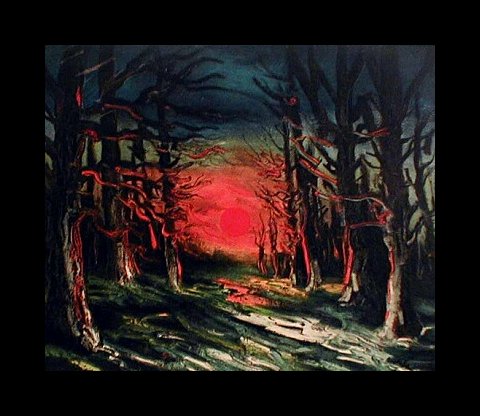
While Vlaminck was most fond of his work as an artist, he was also an author, a poet, a professional musician (violin) and a professional athlete (cycling) in his lifetime. However, before he became a painter who utilized brilliant colors, Vlaminck was a printer who worked in black and white.

It is said that one may easily recognize the work of Vlaminck by simply searching for little clues. His favorite subjects seemed to be of the organic kind; bouquets of flowers, the French countryside, the sea, forests and agriculture. If people appear in any of Vlaminck’s landscape pictures, they are usually given less detail than the flora in the painting, and are not dominant. However, even in his nude paintings (ie, the Bathers, 1908), Vlaminck still gave more detail and life to the back ground objects than to the people.
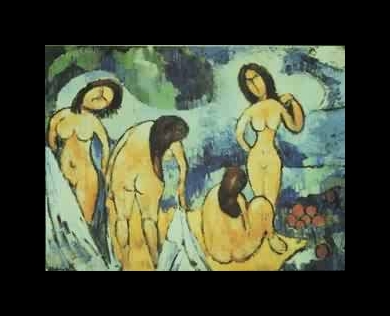
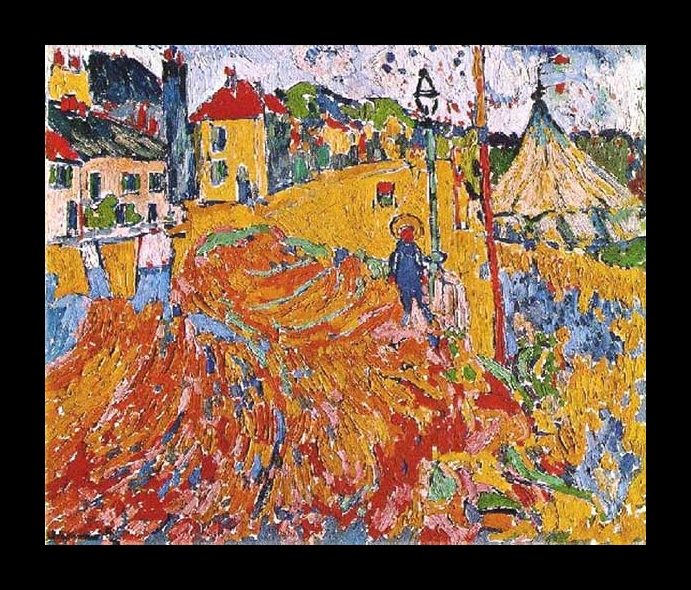
So how can you tell if you own a Vlaminck or a Fauvist painting? For one thing, note the dates and the signatures of the piece in question. If you have a painting that was painted in France from 1898 to 1908, using brilliant, un-mixed colors and unstructured wild strokes, you may have an original Fauve work.

To determine whether or not you have a Vlaminck may be a bit harder. For starters, anything done before 1898 that is not a black and white lithograph is probably not a Vlaminck. It was not until he met with the Fauves that he began to use color, so look for black and white lithographs of country scenes. Toward the end of his career (the mid to late fifties), Vlaminck aslo went back to creating black and white country scenes, yet these were more refined and often done in ink, rather than as prints. If you are still left with any doubt, look for his trademarked straight line signature. While these may be harder to find on his paintings, they are almost always apparent in his lithographs and prints.
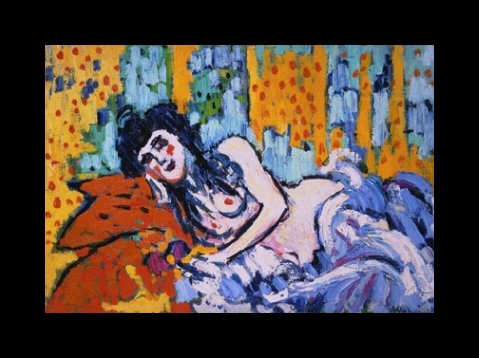
To have a Vlaminck piece that was painted during his Fauvist period is a great treasure, if it is an original. For example, look at The Remorqueur (1905), a painting done near the end of the Fauve period. At this time, artists such as Cezanne were beginning to experiment with cubism, a more regimented style of painting. This can be seen in The Remourqueur., reflected in the tree trunk, the leaves and the water. Maurice de Vlaminck’s style and form changed along with the changing of styles, and while he always kept an impressionistic “beast-like” way of painting, he incorporated other styles according to what was popular at the time.

Other common examples of Vlaminck’s work can be seen is his French village scenes. Vlaminck was fond of roads, and used them often as seen here in the appropriately titled “La Route” (the Road, 1957). At this point, his colors were not nearly as saturated and his brush strokes much less fierce as he had become departed from the Fauve style by this time.
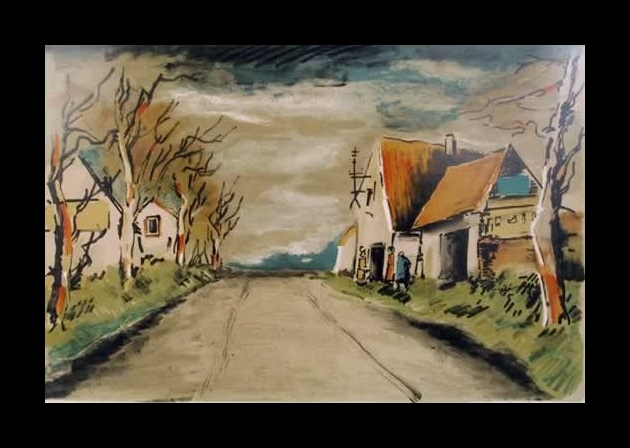
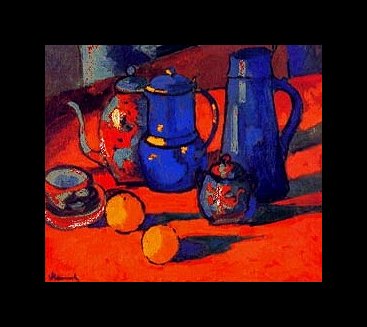
Reviews
1,217 global ratings
5 Star
4 Star
3 Star
2 Star
1 Star
Your evaluation is very important to us. Thank you.
